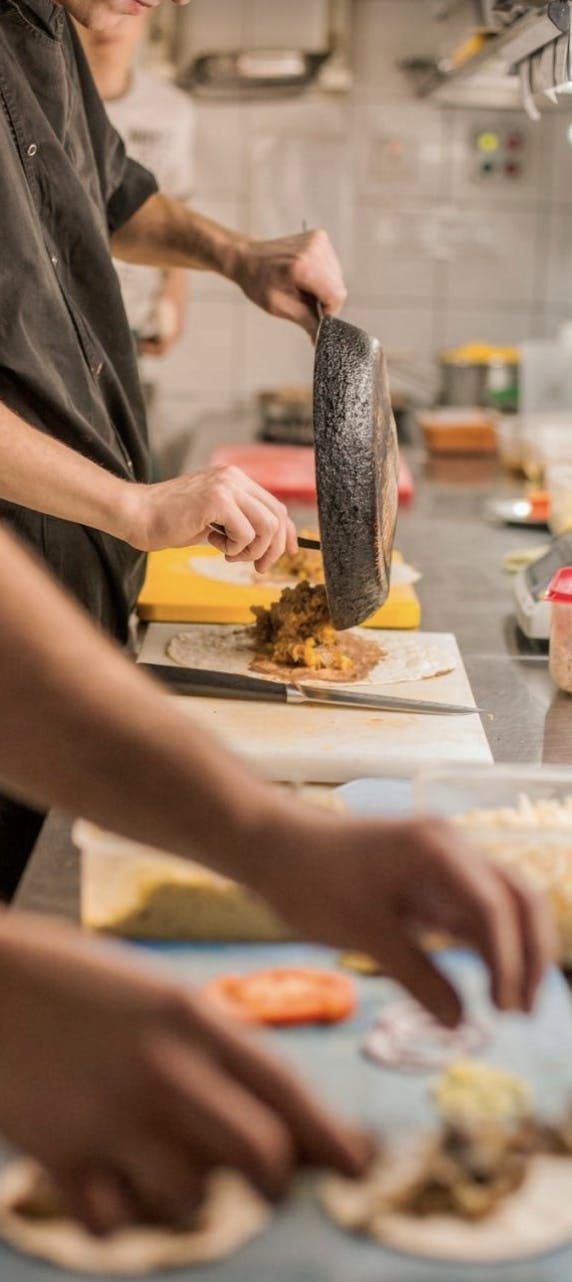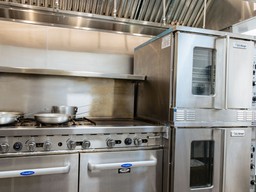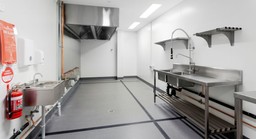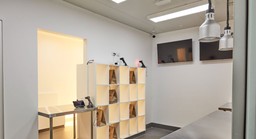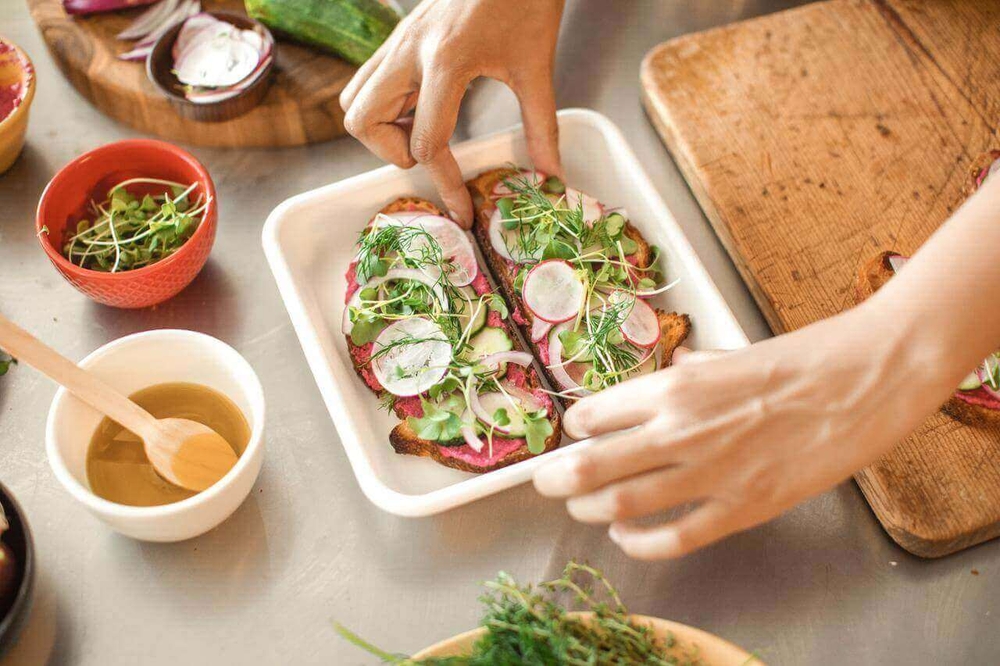Restaurant Equipment List: A Guide
Table of Contents
CloudKitchens
How many tacos can be delivered from a 1000sqft restaurant?
The same amount as a 200sqft ghost kitchen.
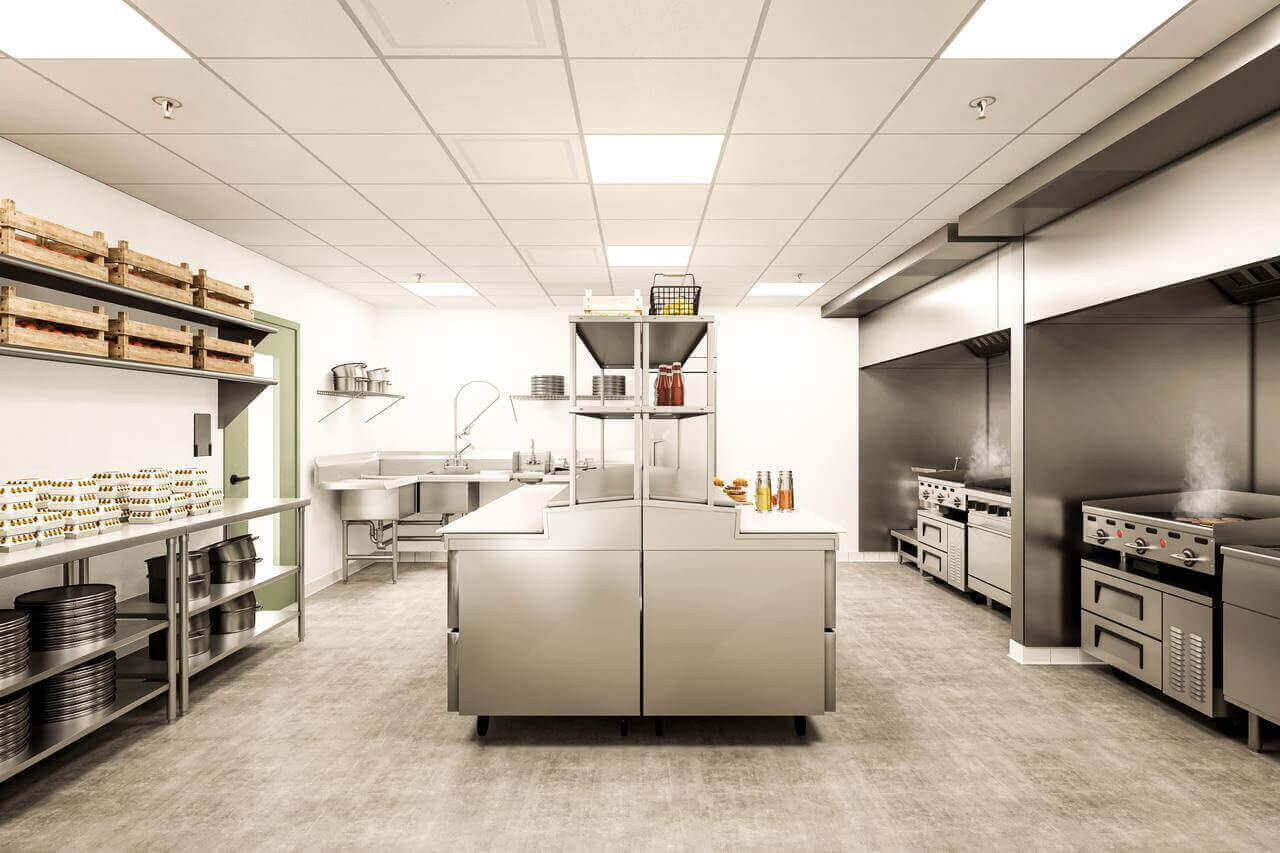
A good restaurant equipment list should include essential items for your operation, such as ovens, refrigerators, mixers, cooking utensils, storage containers, and safety equipment. All of this should also be tailored to your budget, restaurant style, and local regulations. Learn more!
In recent years, an increasing number of successful restaurateurs have made the decision to switch to a ghost kitchen. By running a cost-benefit analysis, they have determined that dividing workflows for in-house dining and delivery orders into two separate locations helps streamline operations, resulting in happier patrons and more sales.
But naturally, if you opt for this route, there are some strategic investments you’ll need to make to ensure that your ghost kitchen is a success.
To help with that, CloudKitchens has prepared a must-have restaurant equipment list.
What to consider when putting together your restaurant’s equipment list?
Before we dive in, it’s vital to note that the specific type of equipment you require and select will depend on the various factors related to your restaurant.
To determine which commercial kitchen equipment you need to ask yourself a few questions. Check out the main ones!
What is the culinary style?
Different foods require different preparation and cooking equipment. For instance, an Italian restaurant may need a pizza oven, whereas a Mediterranean restaurant will likely need a high-capacity food processor and spice grinder.
What is your projected demand?
Do you already have a loyal customer base? Are you servicing hundreds of orders a night? Your customer demand will help determine the type of equipment and how much equipment you require.
What is your budget?
Certain pieces of commercial restaurant equipment are must-haves and others are simply nice to have. Ideally, your spending decisions will align with your available capital. Along those lines, as you weigh your options, remember that there may be items that come with high upfront costs but will create efficiencies that save time and money over the long term.
Used or new?
Do you plan to buy all of your commercial kitchen equipment brand new? Used equipment—so long as it has been properly maintained—can save you significant amounts of money, especially on bigger ticket items.
What are the local regulations?
In some cities, local governments have certain regulations that limit the use of specific types of food preparation equipment.
These are just some of the issues you’ll have to weigh as you follow the steps for how to start a ghost kitchen and prepare to purchase the following restaurant supplies.
Restaurant kitchen equipment list
Once you’ve considered your budget, understood your customer base, and the style of your restaurant, it’s time to start putting together your list.
Here’s how to prepare yourself to buy the right equipment for your kitchen!
Ovens
As the primary tool in your culinary arsenal, ovens are essential for practically any restaurant and will likely be one of your largest input costs. Naturally, a commercial oven is quite different from a home oven since they’re designed to handle greater capacities, produce higher power outputs, and run around the clock.
Depending on your specifications, these may range from a few thousand to tens of thousands of dollars. The type of oven you decide on depends on your primary culinary purpose, while pricing varies based on certain product features and specs:
- Total size
- Quality and features
- Type
- Commercial
- Convection
- Combination
- Pizza
- Conveyor
Cooking ranges
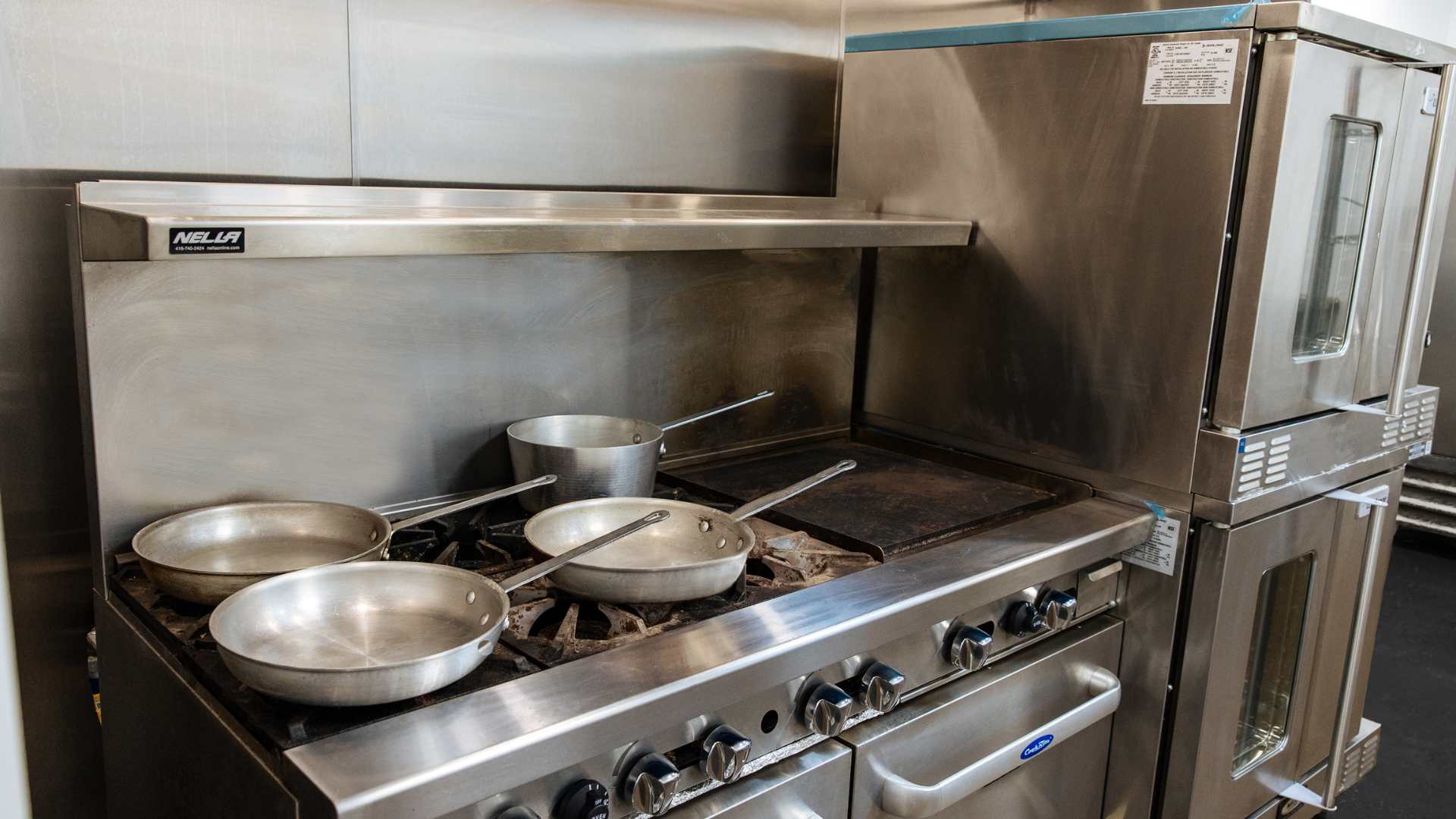
Stoves or ranges can be used as both an oven and a stovetop. This enables chefs to bake, broil, and roast food inside the range while they boil, fry, sear, and sauté on top of it. When determining what your kitchen requires, you’ll likely choose between one of two range options:
- Gas range: These provide superior temperature control, letting a cook immediately bring a pan to their desired temperature. Naturally, these ranges are more difficult to clean and increase the risk of a gas leak or fire.
- Electric range: These provide greater energy efficiency and are easier to clean. However, it’s much more difficult for cooks to prepare food; not to mention, some types of cooking styles are practically impossible with this technology.
Ventilation
Restaurant kitchens can get hot and smoky in an instant. Creating proper airflow is a matter of both comfort and safety. A ventilation system can help manage the airflow and temperature control throughout the ghost kitchen. As you look for the optimal ventilation system for your kitchen, consider the following factors:
- The kitchen size: Your kitchen’s square footage and local fire code safety requirements will help determine where and what type of ventilation system you install.
- Air volume flow rate: The force with which air circulates through the ducts should be determined by the type of cooking you’ll be doing. For instance, grilling or cooking over an open flame will necessitate more airflow than baking.
- Noise: The larger and more powerful the fan, the louder it will be. Kitchens are already loud as is, so it’s important to pick a fan that doesn’t overdo it.
Refrigerators and freezers
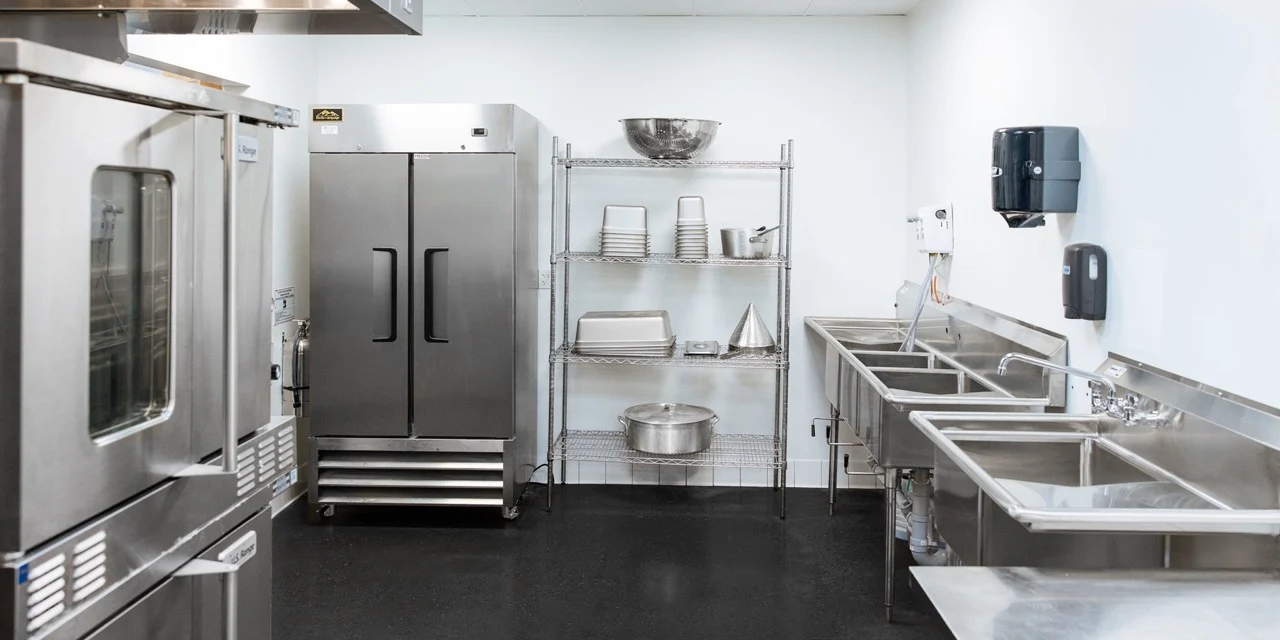
As a restaurateur, you know the value of fresh ingredients— so it’s important to have a refrigerator and freezer that have enough power to keep those ingredients fresh.
According to the hazard analysis critical control point (HACCP) food safety management system, food should be kept between 32° and 41° at all times to minimize bacterial growth and food spoilage. For that, you’ll need a commercial-grade refrigerator and freezer.
As you research your options, consider the following factors:
- Your size and capacity needs
- Features you want, such as a walk-in or reach-in fridge
- The condenser you want (bottom-mounted or top-mounted)
Specialty equipment
Will you be frying food? Making pizza? If you don’t already have a menu drawn up, you should at least have a strong idea of what type of meals you’ll be cooking. This can help you plan and budget accordingly, particularly for kitchen supplies that are explicitly required for making a certain type of food, such as:
- Sous vide machines
- Fryers
- Pizza ovens
- Meat skewers/vertical broilers
Cooking equipment

In addition to the primary equipment requirements, there are dozens of smaller items that you’ll require. With these smaller items, you will also want enough extras to get through a shift without constantly washing each tool. Types of cooking and food preparation equipment include:
- Chef’s knives
- Pots and pans (of all sizes)
- Pot and pan lids
- Baking sheets and roasting pans
- Tasting spoons
- Measuring spoons
- Tongs
- Spatulas
- Ladles
- Whisks
- Mixing bowls
- Plastic inserts for coolers
- Steam table
- Towels
- Rags
Additionally, you’re going to need a place to store essential equipment and dry food ingredients. Having plenty of shelving and storage space is a must. Types of materials you could use for your shelving include:
- Epoxy
- Coated
- Polymer
- Anti-microbial
- Stainless steel
- Chrome wire
Safety equipment
The health and safety of your kitchen staff should be of the utmost priority. To pass local health and food safety protocols, you’ll need to demonstrate that the kitchen is both compliant with ordinances and stocked with all of the essential safety items, including:
- A fire suppression system
- Fire extinguishers
- Rubber floor mats
- Wet floor signs
- First aid kits
- Security cameras
- Aprons, goggles, hairnets, gloves, and oven mitts
Mixers
Commercial mixers can reduce preparation time in comparison to hand-mixing or even mixing with a residential-grade mixer.
Wondering, which one would be right for you?
Typically, you’ll have one of three primary options:
- Countertop mixer: Meant for restaurants that only need to mix ingredients on an occasional basis.
- Floor mixer: Ideal for restaurants that require dough, batters, or sauces on a daily basis, such as a pizzeria or bakery. These can mix large batches of dough all at once.
- Hand mixers: You may need one or more of these in addition to a larger mixer. These are best for incorporating, blending, and emulsifying.
Storage containers
If you want to avoid food waste, you’ll need to have plenty of food storage containers. And remember, different types of foods may require a different type of container. Common items you’ll require include:
- Doug boxes
- Food storage containers
- Kitchen canisters
- Veggie crispers
- Ingredient bins
Stocking your ghost kitchen with CloudKitchens
The list above contains just some of the major pieces of essential equipment you’ll likely need to invest in if you plan to follow a ghost kitchen business model. But what about everything else—the sinks, point of sale (POS) systems, WiFi, etc.?
At CloudKitchens, we help modern-day chefs get set up in a fully operational and permitted kitchen in as little as 4 weeks. And, each kitchen can be specified to different types of cooking operations including, but not limited to:
- Mexican/Latin food
- Italian/Pizza
- Burgers/grill
- Mediterranean
And what comes with your kitchen at CloudKitchens?
The 200 ft2 space you require to run a functional kitchen, including:
- Private kitchen
- Driver pickup area
- Staff locker area
- Restrooms
- Mop wash
- Cold & freezer storage (optional)
- Dry storage (optional)
The services you need for delivery
- Order pickup & processing
- Courier handoff
- Cleaning & maintenance
- Safety & health inspections
- Delivery logistics
- Extractions & ventilation
- On-site support staff
- Delivery software
Basic kitchen equipment
- 3-compartment sink
- Prep sink
- Hand sink
- Commercial hood
- Tablet
- Grease-trap/interceptor (optional)
Utilities and maintenance
- Gas points
- Power outlets
- High power lighting
- Cold & hot water lines
- Gas/fire safety system
- WiFi
- Trash/recycle
- Ethernet connections
- Grease/trap cleaning
- Hood/flu cleaning
- Pest control
Furnishing a pre-set kitchen can help you get your restaurant delivery up and running, saving you substantial time and money. Simply, purchase the larger culinary equipment you need, and then let us handle the rest.
Read More
- Secure your success with restaurant equipment financing
- How to Start a Restaurant Business: 6 Steps For Success
- Attract Restaurant Investors: Tips for Securing Funding
- Restaurant Operations | CloudKitchens
| DISCLAIMER: This information is provided for general informational purposes only and the content does not constitute an endorsement. CloudKitchens does not warrant the accuracy or completeness of any information, text, images/graphics, links, or other content contained within the blog content. We recommend that you consult with financial, legal, and business professionals for advice specific to your situation. |
Sources:
FDA. Retail & Food Service HACCP. https://www.fda.gov/food/hazard-analysis-critical-control-point-haccp/retail-food-service-haccp
More insights & stories
There’s more where that came from.
Get in the know and check out our additional insights
